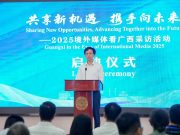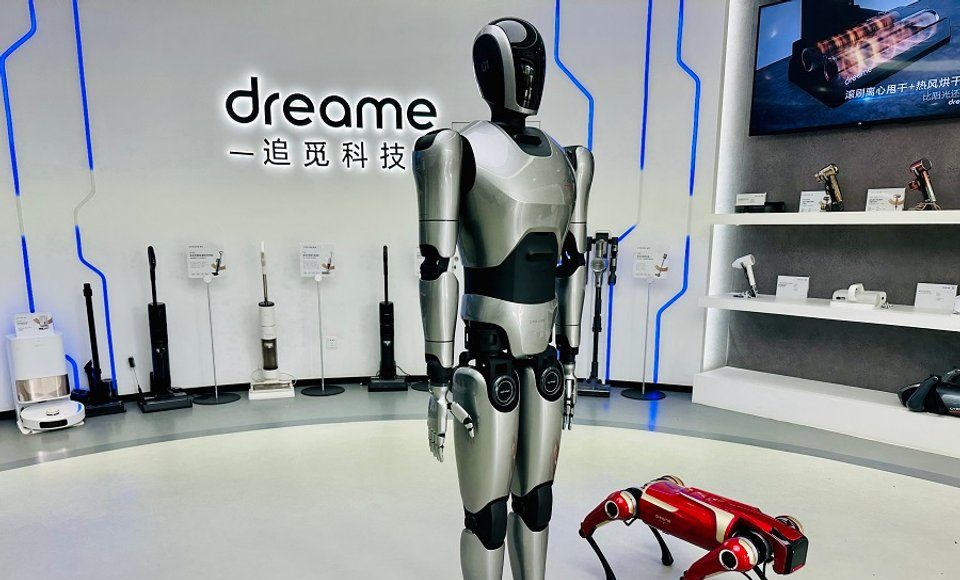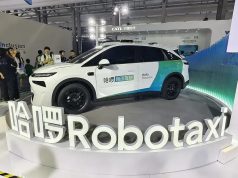(SINGAPORE 20.8.2025)According to the Chinese media, in the first half of this year, more than 83 humanoid robot projects were awarded in China to 72 local companies, with total contract value close to 330 million yuan (about S$59 million), while market attention is shifting from technology R&D to humanoid robots’ practical applications and whether manufacturing companies could deliver the specified products.
Compared to the same period last year, the projects’ quantity and contract values have increased. Among the 72 winning companies, Shenzhen’s UBTech (优必胜), Hangzhou’s Unitree Robotics (宇树科技), and Shanghai’s Zhiyuan Robotics (智元科技)account for 60% of the total transaction value. In terms of individual win, Unitree leads with seven, which are swooped up with direct bids.
Starting this year, orders in China for humanoid robots have grown significantly. According to major manufacturers, the main settings for using domestic humanoid robots now include industrial operations, guided tours, scientific research, education, and elderly care, reported the New Media platform of Caijing, one of China’s most influential financial and business news brands.

Some investors forecast that manufacturers who can reliably produce humanoid robots which can perform practical, end-to-end jobs fully, not just in labs or demonstrations, would attract more capital, while purely conceptual projects would face increasing difficulty in raising funds.
According to Caijing, there is still a gap between the rapid growth of orders and actual ability to deliver among China’s humanoid robot companies.
In the short term, the surge in order volume may face delivery challenges due to insufficient supply chain capacity or constraints in technology maturity.
Some observers pointed out that for manufacturers to be able to mass-produce humanoid robots, they must commercialize their products and make them truly useful.
Currently, AI intelligence levels have not yet reached the stage of artificial general intelligence, meaning capability to do any intellectual task that a human can, and robots still have limitations in understanding human commands and adapting to complex environments.
In June, Unitree and Zhiyuan jointly won a project to produce humanoid biped robots that could perform human works for a China Mobile subsidiary.
The bid totals 124 million yuan, the largest single order for humanoid robots in China. Package 1, won by Zhiyuan, is for full-size humanoid biped robots, while Package 2, won by Unitree, covers small-sized humanoid biped robots, computing backpacks, and five-finger dexterous hands.
Zhiyuan likens the intelligence level of its Yuanzheng A2 to that of a two-year-old child. According to the China Mobile order, Yuanzheng A2 will be deployed in corporate lobbies and service halls, leveraging its strong memory capabilities and domain-specific knowledge to handle various professional queries, with future plans to expand its functions into entertainment, performances, and elderly companionship.
Notably, outside of these large orders, small and medium-sized procurements remained the bulk in the first half of the year.
Projects under 1 million yuan accounted for 60% of deals; those between 1 million and 10 million yuan accounted for 33%; and those over 10 million yuan 6%. Universities, research institutes, and vocational schools remain the largest purchasers of humanoid robots.
Now into the second half of the year, humanoid robot orders are gradually transitioning to be for use in real-world commercial service and industrial settings, with major deals coming close to 100 million yuan, signalling the start of big-scale adoptions.
On July 18, UBTech won the project of MiYi Auto for providing robot equipment worth 90.51 million yuan, setting a global record for the highest single awarded order for a humanoid robot company.
“Strong capability in application brings in orders. We’re not worried about lacking orders; what we fear is falling behind and letting others take the lead—that’s our real view on competition,” said UBTech Chief Brand Officer Tan Min to Caijing.
This year, UBTech aims to deliver hundreds of humanoid robots, including 500 industrial robots. According to Tan, UBTech’s humanoid robots currently achieve about 30% of a human’s work efficiency in industrial settings, while aiming to surpass 50% by early next year and breaking 80% by the end of 2027.
Equipped with infrared cameras, sensors, and autonomous battery-swapping technology, humanoid robots can operate 24/7 in “dark factories” without human presence.
On August 11, Zhiyuan revealed a multi-million-yuan project partnership with Fulin Precision which involves the deployment of nearly 100 Yuanzheng A2-W units in the latter’s factories — marking the first large-scale commercial contract for embodied robots in China’s industrial sector.
In January, Zhiyuan announced the rollout of its 1,000th mass-produced general-purpose embodied robot, including 731 humanoid robots and 269 wheeled robots. The company’s production now exceeds 2,000 units, with this year’s shipments expected to reach several thousand units.
On Monday, Zhiyuan launched six core product lines on both its own store and JD.com, signalling a full transition from deep tech development to large-scale commercialization, offering smart solutions for industrial, service, research, and entertainment settings worldwide.
Galbot, a leading AI-driven robotics company with an estimated market value of 11.5 billion yuan, drew industry attention in August after securing Nvidia’s first next-gen Jetson Thor chip designed for embodied intelligence. Galbot plans to deploy 1,000 robots this year across high-demand settings like smart retail and industrial manufacturing. The company has already rolled out over 10 smart retail stores in multiple cities.
Unitree has not disclosed its order volume for this year yet. According to Kaiyuan Securities, Unitree shipped out about 1,400 humanoid robots last year, the highest in the world. Founder Wang Xingxing stated at an event that its G1 model was likely the best-selling humanoid robot globally this year.
In the first half of the year, smaller players such as Noetix Robotics, LimX Dynamics , EngineAI, Robotera, and Lejurobot were also active, often partnering with local governments or universities to build niche ecosystems. In the second half, many would also focus on industrial and retail applications.
“We follow the path of industrial first, then commercial, and finally household use,” said Sun Rongyi, general manager of Spirit AI’s Embodied Intelligence Data Center. The company’s largest orders come from industrial settings, especially replacing human labor in new energy battery production.
Sun noted that the pressure for automation is high, such as one leading battery maker which employ 140,000 workers globally. Overseas labor costs are higher, and risks of process breakage exist—when building a Spanish factory, the company had to send 1,800 Chinese workers abroad. Future demand for automation will remain strong both domestically and internationally.
Meanwhile, other companies like Fourier Robotics are targeting healthcare, guided interaction, and academic research, aiming to deliver 300 humanoid robots this year.
Despite the surge in orders, many manufacturers and upstream suppliers are struggling to keep up, accelerating capacity expansion this year to meet domestic and international demand, noted Caijing.
China’s Gaogong Robotics Industry Research Institute forecasts that global humanoid robot sales will reach 12,400 units in 2025 with a market size of 6.339 billion yuan; by 2030, it would be nearly 340,000 units worth over 64 billion yuan; and by 2035, over 5 million units worth more than 400 billion yuan.
Several observers stressed that current humanoid robot challenges include immaturity in robot “hands” and “brains” as well as supply chain readiness. Standardization of components, interfaces, and data are also essential for large-scale manufacturing. Without standardized modules and interoperable data, integration remains expensive and labor-intensive, Caijing pointed out.





































